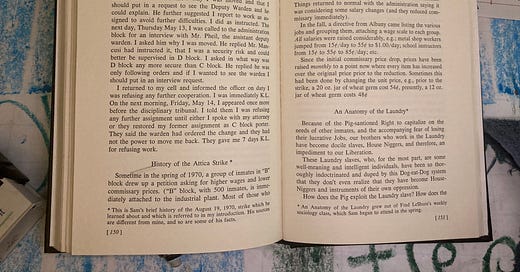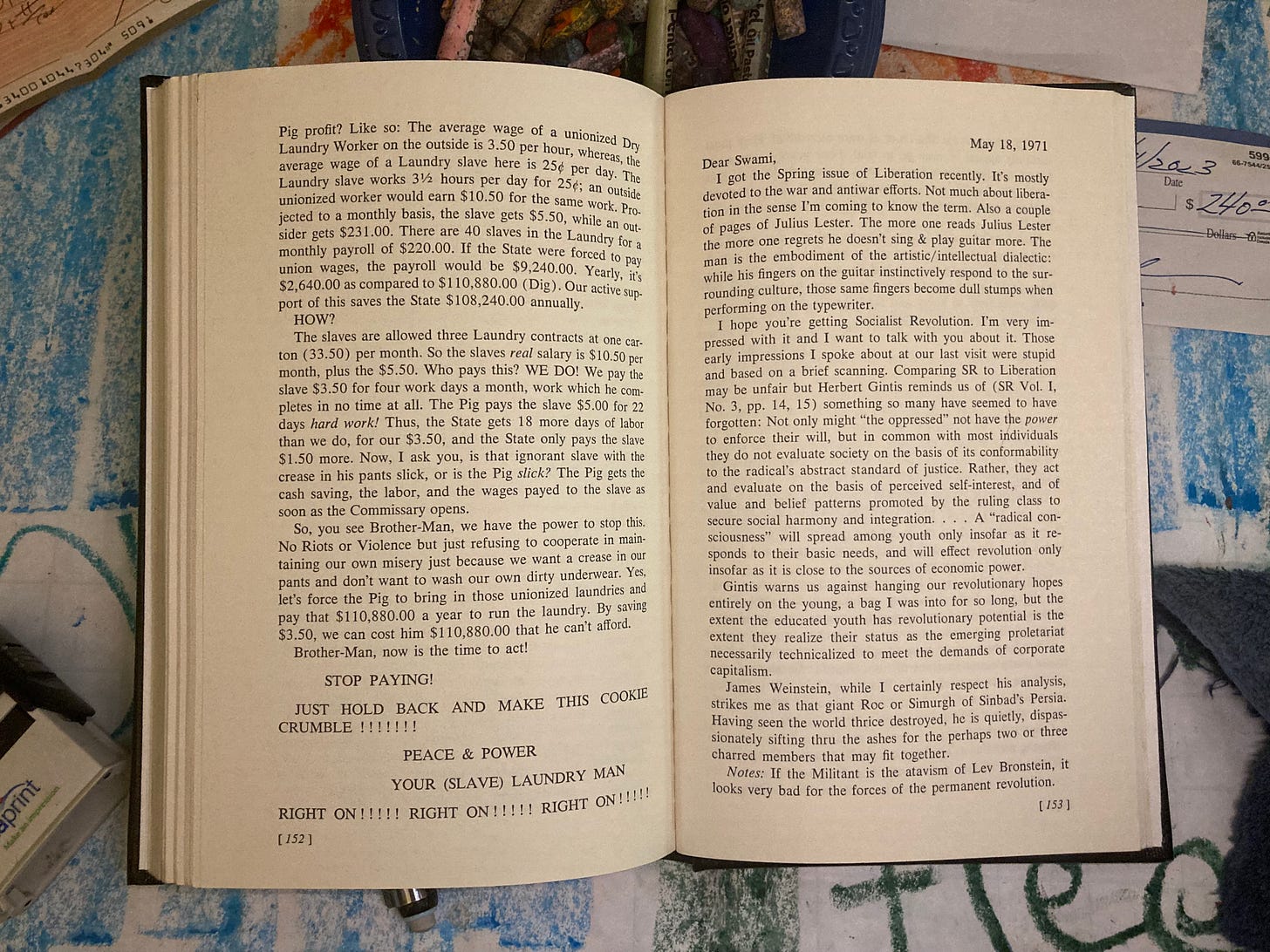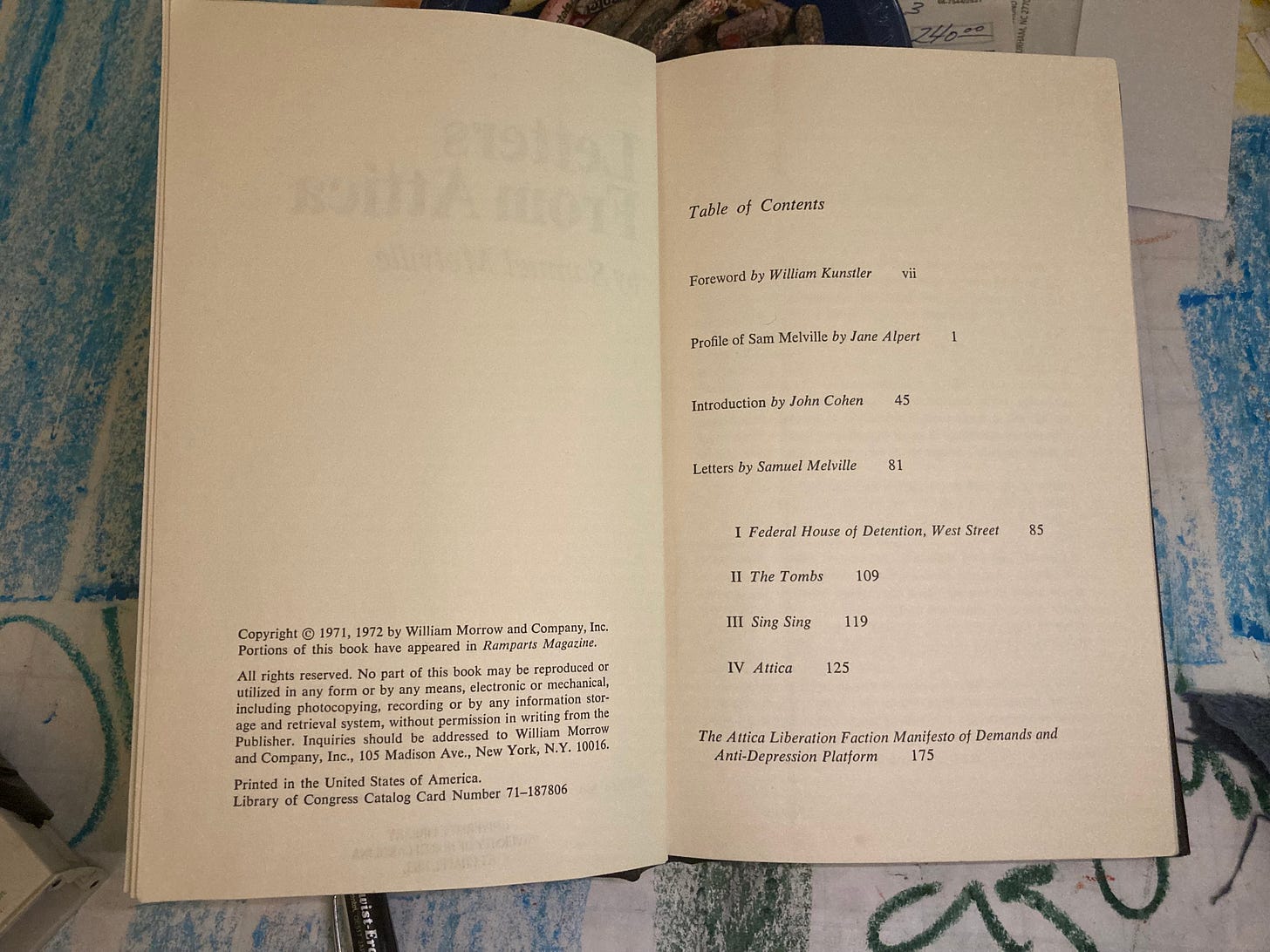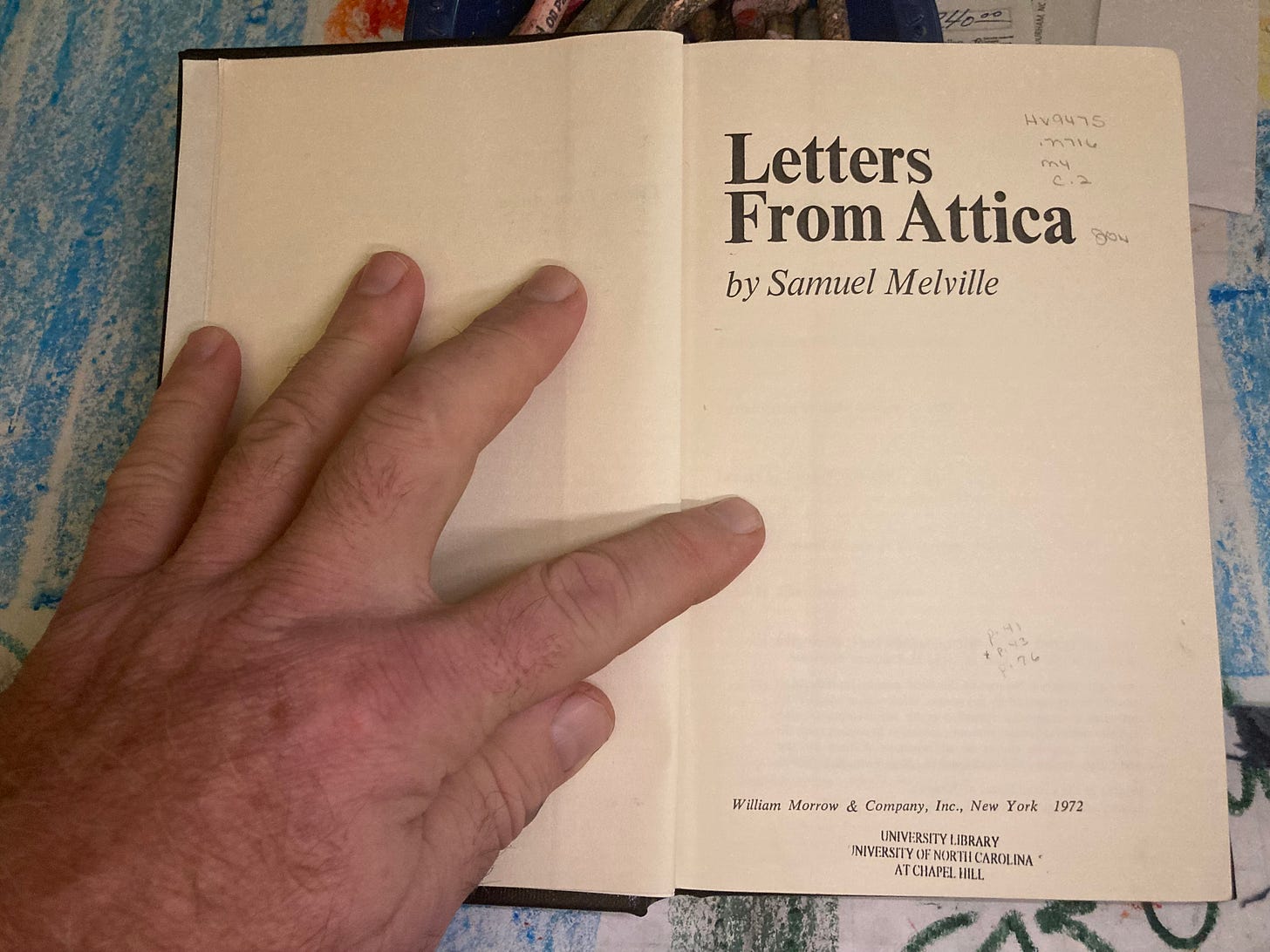An Anatomy of the Laundry (ii) and Letters from Attica (i)
from bomber Sam Melville at Attica Correctional Facility and editor John Cohen outside
Here is the source from where Joshua Melville extracted his father Sam’s work An Anatomy of the Laundry for his own book. William Morrow and Company published Letters from Attica when I was 12 and its author already would never reach 40.
Sam’s analysis of his workplace appears there after his account of Attica inmates submitting to the warden a demand for higher wages and lower commissary prices, then refusing to work, at which time authorities removed all the signators to other prisons. Before that comes a memorandum by Sam of his own relations with his jailers.
All 3 reports, the analysis, the account, and the memo appear between a letter dated May 15, 1971 and another dated May 19. The memo, by internal evidence, was written no earlier than May 14 and perhaps as late as after May 21.
My guess now is that editor John Cohen placed An Anatomy of the Laundry among the dated letters roughly by chronological order of composition. You can read in John’s note at the bottom of the second page shown in the first photograph that Sam developed his analysis in a class led by Fred LeShure, another prisoner.
Sam was studying. The glib, inaccurate title of his work is freshman pomp from a mature student who has more to say than he has accomplished, yet.
Flip back to the front of the book to look at the foreword, and the profile of the author, and the introduction, each by an accomplished intellectual deeply engaged with this beginner. William Kunstler, advocate, a Cicero, tells how he met Sam twice only,
once when the prisoner sought him out to shake his hand, and once when Bill found him to say goodbye before the massacre. Jane Alpert, whose mother graduated at 18 from Hunter College where you enter strictly by IQ, who did her own bachelor’s degree at Swarthmore where honors students do original work reviewed by outside faculty,
explains in the most reflective terms the hot mess of a man she loved. I know John Cohen only through his introduction, testimony by a man of cultivation to friendship with a man of action.
Sam was an action figure. The historian Heather Ann Thompson, focused rather on the keen intellectual life of the black radicals at Attica, instead sketches Sam as an “absentminded professor.” (2016: 29)
That would be the one dead eye that made it hard for anyone else to bring Sam into focus. That eye it seems to me also kept him out of the Army to become a sergeant in the United States Special Forces, where his contempt for authority,
his daring and heart, and his mad skills would have served well. Sam whistled up and ran his own ratline for two bombers on the lam from Quebec. He learned their techniques then recruited and led his own partisans in attacks that killed no one, on purpose. Sam was born and raised for special operations.
The only reason he got caught then executed in the prison yard was he mixed with Columbia radicals like Jane and Upper West Side politicals like John. More crews than we ever will know about were bombing and carrying out hundreds of acts of sabotage across the country without ever getting their names in the paper.
But Sam chose to hang with the schooled. He evidently wanted an education. That is what I see him earning in this Anatomy of a Laundry.
This was the second Viet Nam letter of 3 so far on An Anatomy of the Laundry by Sam Melville. The first posted on January 26, 2023 then the third on February 4, 2023.
Viet Nam letters respects the property of others under paragraph 107 of United States Code Title 17. If we asked for permission it wouldn’t be criticism. We explain our fair use at length in the letter of September 12, 2022.
The colophon of these Viet Nam letters, directly above, shows the janitor speaking with poet David A. Willson on a Veterans Day.









